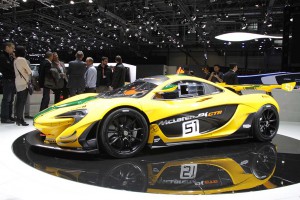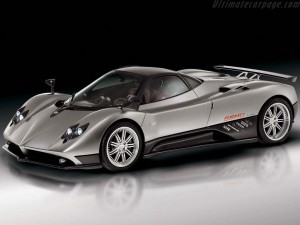British supercar manufacturer McLaren Automotive has some ambitious plans for the next six years, with a goal of adding new models and tripling its current sales volume to somewhere between 4,000 and 5,000 vehicles a year.
One of the newest manufacturers in the high-performance market, McLaren brought its latest entry to the Geneva Motor Show this week in the form of the new 570GT. It’s part of a three-segment strategy aimed at expanding its range of buyers and, among other things, bringing in more women. But, unlike key competitors including Aston Martin, Lamborghini and Ferrari, don’t expect to see McLaren add an SUV to the mix, its CEO said in Geneva.
McLaren only began building cars in 2010, but logged sales of 1,654 vehicles last year and, CEO Mike Flewitt told the Reuters news service, “4,000 is a very good business model for us. I actually think volume by 2022 will be more consistently around 4,500 and I don’t think it will go above 5,000 cars,”
(Lamborghini Centenario celebrates founder’s centennial in style. Click Here to check it out.)
The McLaren name has a long history, but primarily on the racing side of the automotive world. It was founded by New Zealand expat Bruce McLaren in 1963 and has had one of the most successful runs on the Formula One circuit of any team – though it has been struggling in recent years.
It produced a handful of supercars over the decades, including the legendary F1 of the 1990s, an unusual, three-seater that positioned the driver in the middle.
(Is the DB11 really the “most important car ever for Aston Martin? Click Here to find out.)
Today, McLaren Automotive shares space with the Formula One team at a sprawling complex in Woking, Surrey, England. Though the two operate as separate legal entities they share a lot of their technical expertise, bringing track concepts to the street.
That’s helped the automotive side to launch a string of vehicles – starting with the MP4-12C – at an unusually quick pace. Part of the strategy is to offer three distinct segments, a base line starting under $200,000, all the way up to ultra-exotics like the more recent P1 hypercar which came in at nearly $1.2 million.
The new 570GT is the third entry into that lower-end segment, with a price of around $215,000, or $15,000 more than the earlier 570 S. They share the same 562 horsepower twin-turbo 3.8-liter V8, but the GT also gets a new roof and rear, including a spoiler and an aerodynamics package.
The pace of the product offensive is daunting and some traditional competitors, such as Aston and Lamborghini, have struggled to keep up. But the challenge isn’t just coming from those brands but also from the increasingly stringent emissions and mileage standards being put in place around the world.
For the moment, there are no plans for a pure battery-electric model, unlike the Aston Rapid-e currently under development. But McLaren has used battery technology in the top-line P1 to give it an F1-level performance boost. And future models may also use electrification options, officials have told TheDetroitBureau.com.
What’s unlikely to come is a sport-utility vehicle, Flewitt told Reuters. “At the moment an SUV doesn’t fit those for us and I don’t know whether it ever will.”
Of course, most of the competition, including Ferrari, Aston and Lamborghini, took a similarly dim view until they decided to follow broader industry trends.
Whichever products McLaren does bring to market, the price of staying competitive in the supercar segment isn’t cheap. The company had revenues of 500 million British pounds, or $707 million at current exchange rates, in 2014, the most recent year for which it has released its numbers.
It has been investing about 30% of its revenues in research and development, said Jolyon Nash, the board member in charge of global sales and marketing, about 120 million pounds last year. “Over the next six years, up until 2022, we will be investing 1 billion pounds in R&D for new products,” he said during the Reuters interview.
(New name, updated looks and technology for Ferrari FF. Click Here to check out the newly renamed GTC4 Lusso.)



